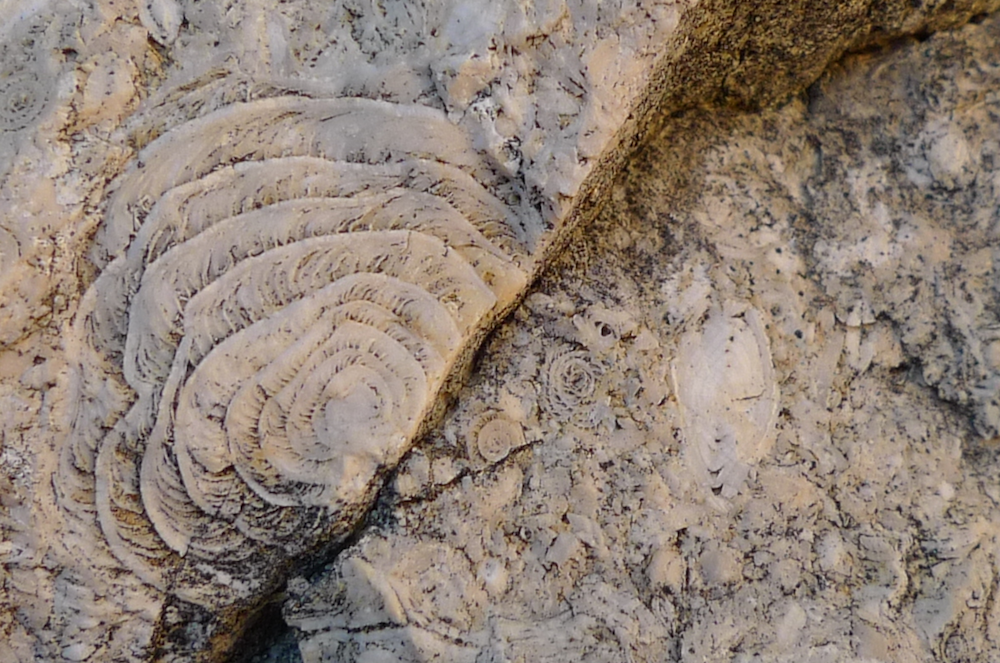New biostratigraphic data on the Paleocene-Eocene from the Prebetic
A biostratigraphic study of the Paleocene-Eocene of the stratigraphically continuous with the northern foreland (Iberian Meseta), Prebetic has been studied by using planktonic foraminifera, calcareous nannoplankton, and larger benthic foraminifera. Twelve sections have been studied along the chain: four sections in the Alicante Sector, four in the Murcia Sector, two in the Granada Sector, and two sections in the Jaén Sector.
The Paleocene-Eocene Prebetic succession can be divided into three stratigraphic formations related by lateral and diachronic changes of facies: limestones and calcarenites (rich in larger benthic foraminifera) in middle stratigraphic position, and two marly-clayey formations in lower and upper positions, respectively. The middle unit represents an internal marine platform, while the two marly-clayey represent the external platform (and the upper slope in a few cases). As a whole, above the unconformity, representing the missing interval which includes the Cretaceous-Paleocene boundary.

Cite as: Martín-Martín, M., Miclăuș, C., Serrano, F., Tosquella, J., Samsó, J.M., Tent-Manclús, J.E., and Martín-Pérez, J.A. (2023): New biostratigraphic data on the Paleocene-Eocene succession from the Prebetic domain (Betic Cordillera: South Spain).Abstract Book, Fourteenth Romanian Symposium on Palaeontology, Bucharest, 14-15 September 2023 / Zoltán Csiki-Sava, Alina Floroiu, Maria-Raluca Văcărescu, Iuliana Lazăr – Bucureşti : Editura Universităţii din Bucureşti -Bucharest University Press, 2023, 79-80 p.
History of western Tethys Ocean and the birth of the circum-mediterranean orogeny as reflected by source-to-sink relations
A broad region of Mesozoic to Cenozoic tectonism along the western and central Circum- Mediterranean (CM) margins, from southern Spain (Betic Cordillera) to the northern Morocco (Rif) and Italy (Apennines), includes huge volumes of sedimentary record since the Late Paleozoic. These sediments are contemporaneous and related with the fragmentation of the Pangean supercontinent due to the rifting and progressive closure, as well as the following birth of the CM orogeny. The composition and stratigraphic relations of clastics in diverse sedimentary basins of the CM region reflect a complete record of provenance relations related to the progressive destruction of the Neotethyan Ocean and plate convergence between the two major plates of Europe and Africa, and Iberia, Adria and Mesomediterranean microplates located between them. The changing nature of clastic wedges reflects the provenance relations from different source rocks involving obduction of the oceanic lithosphere, the uplifted Alpine-Mediterranean Chains, and the accreted previously deformed Mesomediterranean Microplate (AlKaPeCa), as well local neovolcanic sources, within the spatial and temporal evolving geo-puzzle terranes of the CM orogeny. The provenance evolution of sediment provides insights into how plate convergence and continental collision direct the sediment dispersal pathway in Cenozoic basins due to closure of eastern and southern Alpine-Tethyan remnant ocean basins and to the dual dispersal pathways from the previously born Alps and the nascent AlKaPeCa at the expenses of the previously deformed Mesomediterranean terranes. The source-to-sink relations testify episodic deformation events, diachronous Tethyan basin development, differentiate sediment provenance from exhumed and uplifted Alpine and CM orogens, and palaeogeographic rearrangement of crustal blocks along the nascent Mediterranean region.

cite as: Critelli, S.; Martín-Martín, M. 2023. History of Western Tethys Ocean and the Birth of the Circum-Mediterranean Orogeny as Reflected by Source-to-Sink Relations. Int. Geol. Rev. 1–11, doi:10.1080/00206814.2023.2280787.
Recent Comments